#Louise Borgia
Text
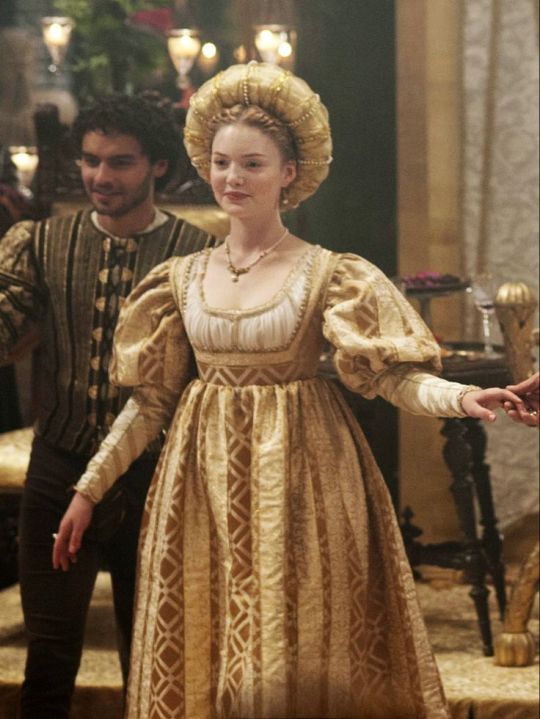
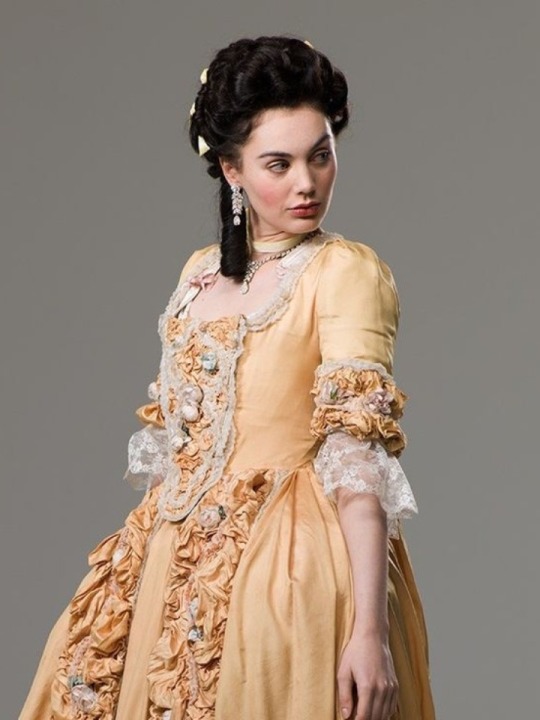
Period drama's dresses tournament: Golden-yellow dresses Round 1- Group B: Lucrezia Borgia, The Borgias (gifset) vs Marie-Louise D'Aubigne, Harlots (gifset)
#period drama dresses tournament#tournament poll#tumblr tournament#polls#fashion poll#lucrezia borgia#the borgias#marie-louise d'aubigne#harlots#round 1
17 notes
·
View notes
Text
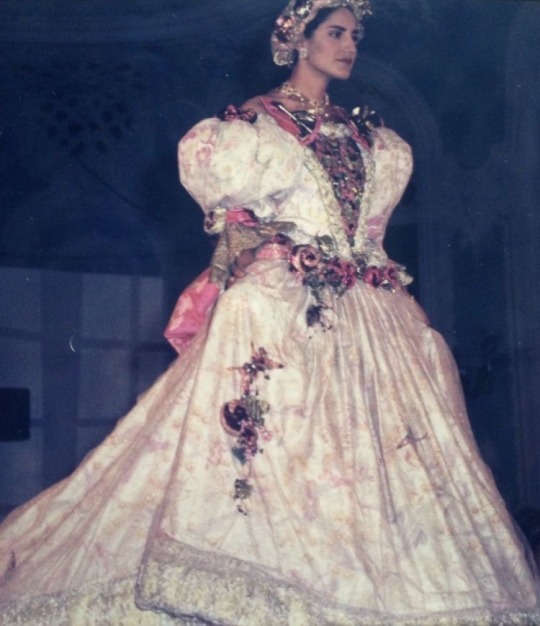
“Ornate Borgia wedding dress hand printed and designed by Louise Hamlin-Wright and decorated with Venetian glass.”
60 notes
·
View notes
Text

"Women have been there all along. They've been there, and they've been doing things! They've been relentlessly doing stuff, whether you knew about it or not!"
#books#women in history#100 nasty women of history#hannah jewell#non fiction#litedit#literature#bookedit#book quotes#history#anne boleyn#laura Ammanati#elizabeth i#boudicca#marie louise d'aubigne#mary rose tudor#tullia d'aragona#morgan le fay#lucrezia borgia#nell gwyn#madame de montespan#dorotea gonzaga#maria eleonora of brandenburg#maria of brandenburg#tomrys#queens#royalty#women of history#strong women#mary tudor
70 notes
·
View notes
Text








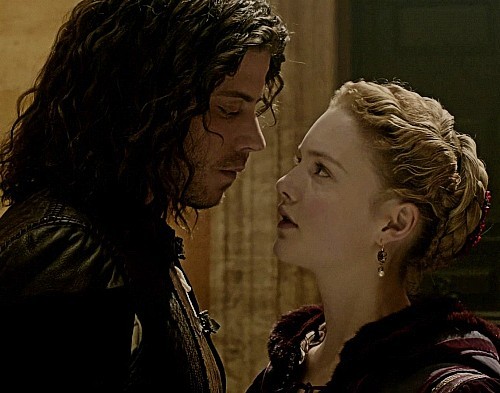






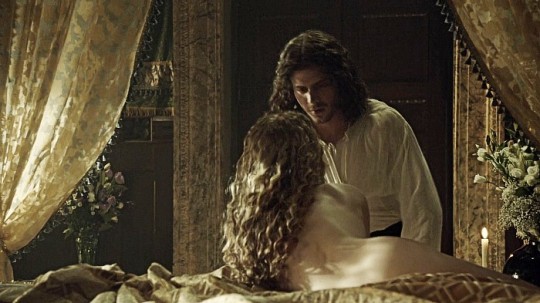


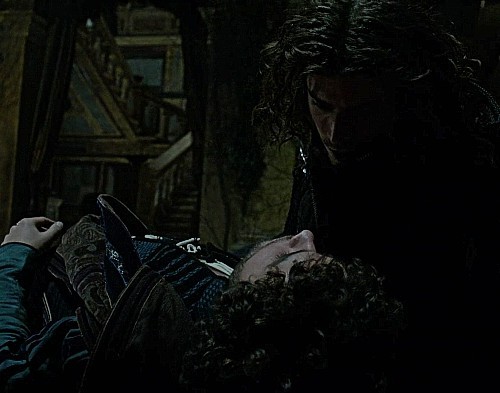



the borgias 2.03 / the crown of love by john everett millais / autobiography of a yogi, paramahansa yogananda / the borgias 3.04 / pine to sound, nancy kuhl / the lovers, giulio romano / half-light: collected poems, 'elegy, frank bidart / the borgias 3.09 / aucassin and nicolette by marianne stokes / penelope’s song, louise glück / the borgias 3.03 / civil service, claire schwartz / power politics, 'he shifts from east to west', margaret atwood / the borgias 3.02 / illustration from the mabinogion by alan lee / the selected plays of hélène cixous, 'the perjured city', hélène cixous / the borgias 3.10 / bone, yrsa daley-ward
#the borgias#theborgiasedit#cesare borgia#lucrezia borgia#cesare x lucrezia#web weaving#web weaves#web weavings#comparative#comparatives#mine#mww#robyn#me#tbww
559 notes
·
View notes
Text
Guest post from John Martin Rare Book Room
Hardin Library of the Health Sciences
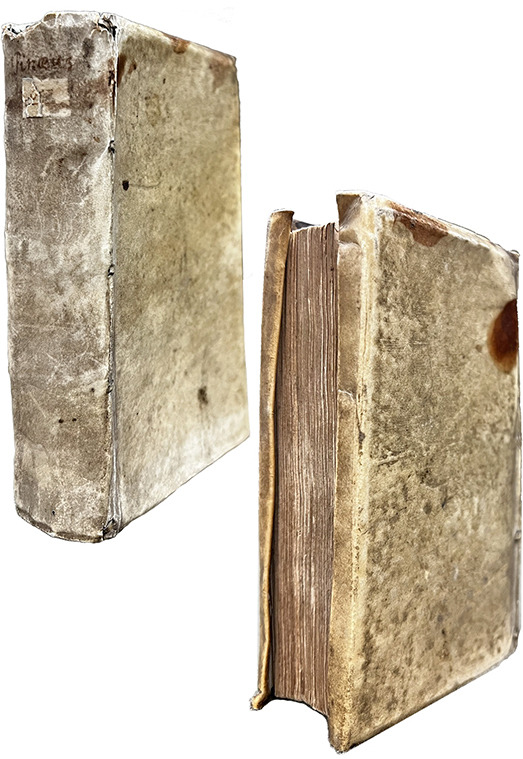
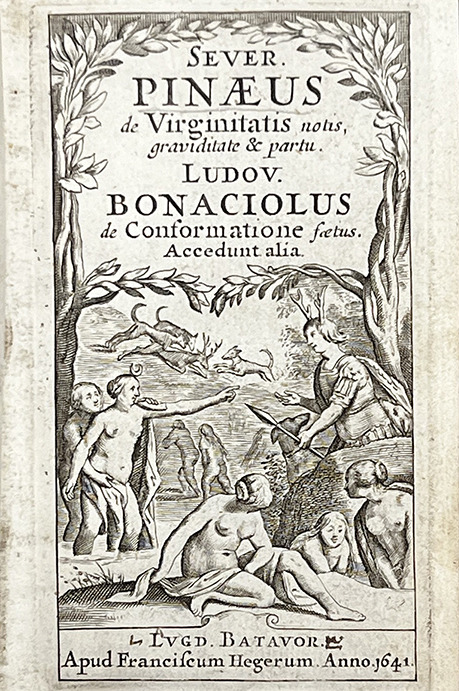

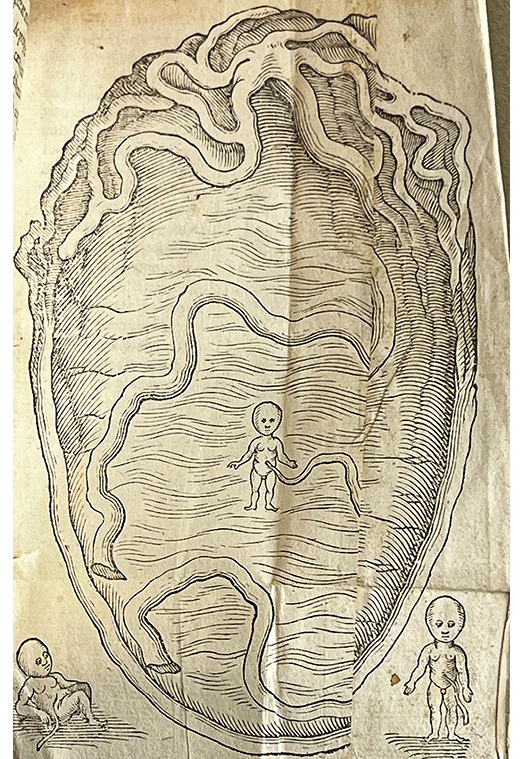
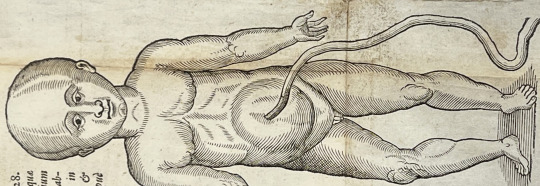
PINEAU, Severin (1550?–1619). De integritatis et corruptionis virginum notis: graviditate item & partu naturali mulierum, opuscula.
BONACCIUOLI, Luigi (d. 1540). Enneas muliebris.
PLATTER, Felix (1536-1614). De origine partium, earumque in utero conformatione.
GASSENDI, Pierre (1592-1655). De septo cordis pervio, observatio.
SEBISCH, Melchior (1578-1674) De notis virginitatis.
Third edition. Printed in Leiden by Francis Heger, 1641. 28 pages. 13 cm tall.
We are big fans of tiny books here at the JMRBR. And banned books, too. So we thought we would highlight a curious little book packed with a number of treatises on obstetrical and gynecological topics, once considered so risqué that it was condemned and banned in several locations. Not coincidentally, it was also a hit that spurred the printing of several editions. The book is also fascinating for its illustrations.
This volume is a collection of gynecological and obstetrical texts. The content, especially the first and last works, caused quite a stir due to the frankness and detail regarding virginity (and how it is lost), pregnancy, and childbirth - so much so that it was confiscated in many locations. Naturally, it was also very popular and printed in several editions.
And by "virginity," the authors specifically mean female virginity. Authors of early medical works surprisingly did not seem too interested in male virginity! All snarkiness aside, the study of female anatomy and physiology, especially of anything to do with sex, pregnancy, and birth, has a long and problematic history. We encourage you to read more about this history here and here and here and here. This is by no means an exhaustive list.
Five works are gathered under the main title, De integritatis et corruptionis virginum notis: graviditate item & partu naturali mulierum, opuscula [On the integrity and corruption of known virgins], by the 16th-century French surgeon Séverin Pineau (1550?–1619). Pineau was born in Chartres but trained and practiced in Paris and was surgeon to several French kings. He is most known for his works on gynecological and obstetrical topics, including as an advocate for symphysiotomy (also known as a pelviotomy), a procedure performed on women in labor in which the cartilage of the pelvis is cut to widen it when there is a problem with the position of the baby. This procedure is rarely performed today, with caesarean section preferred instead.
De integritatis et corruptionis virginum notis first appeared as part of Pineau's 1597 work, Opusculum physiologum & anatomicum in duos libellos distinctum. It is divided into two parts. The first provides anatomical descriptions of female genitalia. Interestingly, Pineau uses metaphors when naming certain parts. It was common among French midwives at the time to use metaphors instead of anatomical terms when describing female sexual anatomy (e.g., babolle abbatue), while our old friend, Louise Bourgeois, avoided both metaphor and specifics, referring instead to general areas of anatomy.
The first part of Pineau's work also lists problems that can occur during pregnancy and labor and surgical methods for treating the problems. The second part covers formation of the fetus. Several interesting woodcut illustrations accompany Pineau's text, including the muscle-bound fetus above.
The second treatise is by Luigi Bonacciuoli (d. 1540s). Bonacciuoli was a physician and anatomist who specialized in obstetrics and practiced at the University of Ferrara in Northern Italy. Enneas muliebris [Treatise on Women in Nine Parts], first printed in about 1505, is a work on obstetrical and gynecological topics based on Bonacciuoli's university lectures. It contains a lengthy dedication to Lucrezia Borgia, the duchess of Ferrara and daughter of Pope Alexander VI and one of the most powerful female leaders of the time.
In the book, Bonacciuoli describes the anatomical structures, such as the mons veneris, the clitoris, and the hymen, and includes a chapter detailing how the fetus is nourished and when fetal movements develop. Other chapters include discussions of the signs of conception, the causes and signs of abortion, delivery, and care of the newborn. He based most of his material on classic works.
The next title belongs to Felix Platter (1536-1614), a Swiss physician and anatomist who practiced at the University of Basel. He remained city physician until his death and was successful in developing the medical school into one of the strongest and finest in Europe. Platter is credited with performing the first public dissection of a human body in a Germanic country and is said to have dissected over 300 bodies during his career. He was widely respected as a teacher and was a physician of great courage who remained in Basel to treat the sick on five occasions when the black plague struck the city. As one of the early nosologists (classifier of diseases), Platter recognized three classes of diseases based on their natural history and postmortem findings and distinguished four types of mental illness. He is best known for his De corporis humani structura et usu, published in 1583.
De origine partium, earumque in utero confirmatione [On the origin of fetal anatomy and formation in the womb] focuses on the formation of the fetus. Platter is chiefly concerned with the origin of the arteries, veins, and nerves from the brain and the relationship of the veins to the heart and liver. This work first appeared in Platter's De corporis humani structura et usu.
The next treatise belongs to the famed French philosopher, astronomer, and mathematician (and opponent of William Harvey), Pierre Gassendi (1592–1655). A Catholic priest with a doctorate in theology, Gassendi was a professor of philosophy and mathematics and believed that experimentation and observation were necessary for the study of science and nature. Among many other contributions to science and philosophy, he is known for the first recorded observation of the transit of Mercury across the sun.
De septo cordis pervio, observatio [Observation on the septum of the heart] is the only appearance in print of this work; there is no separate edition. Gassendi gives the first description of the foramen ovale, a passageway in the fetal heart that allows blood to flow to the left atrium from the right atrium, which closes as the heart fully forms.
The final title is from the Strasbourg physician Melchior Sebisch the Younger (1578-1674). Sebisch (aka Sebizius, Sebizii, and others) was a professor of medicine at the University of Strassbourg, where he eventually took over for his father (Melchior Sebisch the Senior) as the Chair of Medicine. Like many of the other authors on this list, he has many publications to his credit, particularly translations of and commentaries on Galen.
De notis virginitatis [On the characteristics of virginity] bookends Pineau's De integritatis by providing another treatise on the physical signs of female virginity.
The volume is bound in contemporary limp vellum with yapp edges, another callback to our discussion of Louise Bourgeois. The cover shows clear signs of use and aging, with a yellow discoloration, scratches, and staining. The paper is in great condition, with the exception of a torn page and the larger fold-out woodcut illustrations, which have seen a lot of use.
Along with workout warrior fetuses, there are other curious images throughout the book, including the tiny, fully-formed fetus swimming in the cavernous womb seen just above. It is joined by two other fetuses, including one that appears to be taking a moment for some serious rest and reflection.
Most of the illustrations are derived from the work of Guilio Cassesrio, a 16th-century Italian anatomist lauded for the artistry of his illustrations. Each of the fold-outs was also repaired at some point, which unfortunately means we lost part of each image. You can see evidence of these repairs in the womb image.
--Curator Damien Ihrig
#history of medicine#uiowa#libraries#special collections#jmrbr#hardin library#birth#babies#women health#banned books#anatomy#history
56 notes
·
View notes
Photo








The Borgia Stick - NBC - February 25, 1967
Crime Drama (Made for TV movie)
Running Time: 120 minutes
Stars:
Don Murray as Tom Harrison
Inger Stevens as Eve Harrison
Barry Nelson as Hal Carter
Fritz Weaver as Anderson
Sorrell Booke as Alton
Marc Connelly as Davenport
Kathleen Maguire as Ruth
Dana Elcar as Craigmeyer
Barnard Hughes as Doctor Helm
Frederick Rolf as Rigley
Hugh Franklin as Willoughby
Ralph Waite as Man from Toledo
John Randolph as Smith
Valerie Allen as Louise
Sudie Bond as Wilma
Doreen Lang as Mrs. Hollingsworth
House Jameson as Win Hollingsworth
#The Borgia Stck#TV#NBC#1967#Saturday Night at the Movies#Crime Drama#Don Murray#Inger Stevens#Barry Nelson#Fritz Weaver
4 notes
·
View notes
Text
I can't see a future for myself and that scares me
I haven't taken my meds in over a year I want to be loved for me, not the sedated version of me
Me/Jordyne:
It seems like the worlds smiling without me
Should morals be dictated by fear of punishment?
They all had opinions of how the serial killer should be killed, and seemed to feel pity for his victims. I felt nothing, once again. I acted like I had a bit of an opinion but I really didn't. It felt the same as hearing what was for breakfast.
Why do you look like you just killed something?
I feel repulsed by my own body which somehow seems to be oozing germs, when there really isn't anything there. I wanna skin myself., claw my skin up and scrub underneath it so I'm clean. This is what it means to be sick, means to be constantly obsessed.
I love books that are
They just don't give out lobotamies like they used to anymore
(I'll say it to your face. Go fuck yourself.)
I've never felt romantically or sexually attracted to anyone before. I don't feel anything, including those things.
My Number One Man: Evangelos Kosmos
https://www.kijiji.ca/v-dogs-puppies/sudbury/beautiful-full-breed-yorkie/1651421147
240 Pack $53.39
JAM Paper Round Circle Label Sticker Seals, 2.5 inch diameter, White, 2 Sets of 120 (2147615066g)
0.22
That's okay. In taking the highest dose of medication they're allowed to give out and it's still not working
Alyssa/Aisha: Eyes scorched out & Beheaded
Charlize:
Hilise:
Kiera: Beheaded
Evienrose/Eve: Suicide by drinking poison
Louise:
Athanasia: Executed by hanging
Aria Roscente:
(Florentia):
Cayena:
Jayna:
By ,, Nakov
Nausea
1. Penelope & Callisto
2. Eris & Anakin
3. Ruby & Izek
4. Bianca & Zachary
5. Charlize & Dylan
6. Aria & Asher
7. Leticia & Erden
8. Olivia & Ian
9.
10.
11.
12.
13.
14.
15.
16.
17.
18.
Vivi & Ahin / Ayesha & Hades / Cassia & Zester / Hilise & Axion / Lily & Vlad / Lariette & Ian /
1. Aria Roscente
2. Astelle Leston
3. Bianca De Arno
4. Cayena Hill
5. Charlize Ronan
6. Cassia Greze
7. Eris Misérian
8. Fiona Green
9. Hilise Inoaden
10. Kiera Parvis
11. Leticia Grey Halstead
12. Medea Solon
13. Penelope Eckart
14. Rudbeckia De Borgia
15. Roxana Agriche
16. Serena White
17. Soru
18. Tatiana Cartier
19. Verta Alberhart
20.
I felt myself in a solitude so frightful that I contemplated suicide. What held me back was the idea that no one, absolutely no one, would be moved by my death, that I would be even more alone in death than in life.
Jean Paul Sartre, Nausea
Notes from Underground
Novella by Fyodor Dostoyevsky
I'm Thinking of Ending Things Novel by Iain Reid
House of Leaves Novel by Mark Z. Danielewski
The Butterfly Garden Book by Dot Hutchison
S. by Doug Dorst and JJ Abrams
This book is not a suicide note. Ten days after Edouard Leve handed in the manuscript of Suicide to his publisher in 2007, he hanged himself in his apartment. He was 42. Two years after Jean Amery's On Suicide was published in 1976, the author took an overdose of sleeping pills. He was 65. ...
Notes on Suicide
Book by Simon Critchley
Nutmeg, Lemon juice, Vegetable Shortening, Garlic powder, Cocoa powder, Apple cider vinegar, Canola oil, Unsweetened milk, Colored dye, Soy Milk, Distilled vinegar, Soy sauce, better than bouillon vegetable paste*, Soy curls, Vegetable broth,
1 vegan yellow onion, vegan ground beef, chili powder, (oregano dried), paprika, unsweetened almond milk, vegan broth, rotini pasta, shredded vegan cheddar cheese,
Cinnamoroll Plush Slipper Boots
Thing I Want to Buy:
1. A Pocket Dictionary of the Vulgar Tongue $18.95
HYPE
Hype Honeydukes Holo Harry Potter Lunch Bag
Harry Potter Birthday Party: Honeydukes loot bags
You can justify anything if you do it poetically enough.
...You can only subject people to anguish who have a conscience. You can only punish people who have hopes to frustrate or attachments to sever; who worry what you think of them. You can really only punish people who are already a little bit good.
These were good people and they had been good to us and we had therefore had a good time. To conclude otherwise was frightening, raising the specter of some unnameable quantity without which we could not abide, but which we could not summon on demand, least of all by proceeding in virtuous accordance with an established formula.
When you pushed me in the water, I swam I had to go my whole life learning, so that I wouldn't drown. You said you treated me like shit cause I deserved it When really you were just miserable with yourself
I let you
Cause I'm taking back my power,
Rico Nasty - Smack a Bitch
My Favourite Badass Girl's: Carter, Sloan,
Sloan D'Aboville: the Jefa of the Spanish mafia / La Jefa of the Spanish Mafia / evil, unforgiving and cold
Point of Menace : Sloan D'Aboville : the Jefa of the Spanish Mafia - evil, unforgiving and cold
Carter [ON HOLD] : Carter Knight : Leader of the Devil's Reapers (Mafia) -
Sinners like us don't find forgiveness in a church no more
This for my people going through depression This for the kids who never felt affection This for the kids whose parents don't accept them Saying they love everyone else except them
It seems like the worlds smiling without me
(God) (The Dream)
Why does my throat burn when I drink energy drinks?
If this happens to you, caffeine could be a culprit. "Caffeine relaxes esophageal sphincter, which allows acid to come up in the throat,"
2. You’re peeing orange
Urine that is dark yellow or orange is a telltale sign of dehydration. "Coffee is actually a diuretic that can lead to dehydration by increasing the amount you urinate so you lose too much body fluids," says Amy Gross, MPH, RD, CDN and a clinical dietician at New York Presbyterian Hospital. Caffeine usually doesn’t trigger dehydration until after you’ve had about 500 mg, so you should be safe if you stick to a cup or two of coffee a day.
"They love without measure those whom they will soon hate without reason."
It is not that [the sociopath] fails to grasp the difference between good and bad; it is that the distinction fails to limit their behavior.
Should our morals be dictated by fear of punishment?
I didn't think I'd make it to 12. I'm turning 18 this year.
Hearing words of love sounded like a record on repeat. You loved me, but I didn't love you.
Most days, it feels like I'm eating my own heart
I thought I needed to get worse before I could get better
Mother's often have nowhere to put their rage. More times than not, it gets directed towards their daughters, because they are a clear image of what they could've been. An unmoulded version they could make into something to feel as if they have accomplished something themselves.
111111u
The truth is cruel. The people we love don't really love us back.
I cannot understand this feeling, and there's no way to explain it
Unless you are constantly exposed to a certain amount of pain, you will be afraid of it
Sometimes I wonder if there's something waiting for me in life. If maybe I'll wake up one day and suddenly want to live it.
You can't save me, and I'm afraid I'll drag you down with me
The side of me that was lovely, the side of me that cared about others. It made me sick to think that it was all a lie.
My mother tells me "Don't bleed on my floor," but she's constantly cutting me.
You told me you loved me my whole life, yet I never felt a thing
When the only emotion you ever showed me was anger, I welcomed it with open arms. I wanted you to feel something for me, even if all that was is rage.
In your eyes, what do I look like? Am I as bad as I make myself seem?
I had nowhere to put this sadness, so it turned into anger
A lifetime of sadness turns a person angry
I sat with my sadness long enough, until it became anger
Just because someone has it worse, doesn't mean you don't have it bad
I'm sorry that I broke your heart because I didn't know love
I'm sorry that I broke your heart because I didn't feel know love myself
I'm sorry that I broke your heart because I didn't know how yo love
I can't feel like others do so I end up hurting them by my bluntness ))
Thing Called Love
Not Sober
Rainstorm tixzystcks
Happy Face
Holy Molly
Famous Hoes
First Place
Virtual)) blue Balenciaga))
Robbin Hood
Hold Me While You Wait
Be Alright
Waves
I'm sorry that I broke your heart because I couldn't feel love in mine
Mafia Boss Female Lead's: Sloan D'Aboville (Point of Menace : RuStYtAbLeS) Carter Knight (Carter : Rachel1Levy)
Mafia Boss Male Lead's: Evangelos Kosmos [Gigi] (Serendipity & Sovereignty)
Medea Solon : ESTJ
3 notes
·
View notes
Note
Hello. New to your blog and there's a big chance you've already answered this before, but you have such a rich inner world and I appreciate so much of what you put out and share with us that I feel I gotta ask: what books/movies/shows/quotes changed your life in big, profound ways? I cannot not have those in my lists.
omg thank you, this so sweet?? the list below is stuff that really resonated with me specifically, and it almost certainly won't have the same impact on everybody, BUT. you asked so you shall receive :)) in no particular order:
Borgia (2011-2014), created by Tom Fontana
Dead Like Me (2003-2004), created by Bryan Fuller
Lamb: The Gospel According to Biff, Christ's Childhood Pal by Christopher Moore
Only Ever Yours by Louise O'Neill
Crush by Richard Siken (yes, I know, I’m a walking cliche, but there is a reason Siken is basically worshipped nowadays and that reason is that he’s really fucking good)
A Monster Calls (2016), based off the book of the same name by Patrick Ness
The Song of Achilles by Madeline Miller (same as the above - popular things are good, actually)
The Lion in Winter (1968), based off the play of the same name by James Goldman
A Softer World webcomic, by Joey Comeau and Emily Horne
The Farseer Trilogy by Robin Hobb
Misfits (2009-2013, but really just the first two seasons)
The Princess Bride (1987) dir. Rob Reiner, based off the book of the same name by William Golding
The Little Prince by Antoine de Saint-Exupery
The South American Trilogy by Louis de Bernières
Ever After (1998) dir. Andy Tennant
for things like quotes it’s harder to narrow down - i feel myself change a little bit when i read new things practically every day, but if i had to narrow it down to One Quote That Changed Me, it’d probably be 'this may be a sad chapter, but you are not a sad story’, which i can’t even really source, it’s so... unoriginal, i guess, and saying the same thing a lot of other things say in better, more interesting ways - however, when i was mentally the lowest i’ve ever been and didn’t really want to be around anymore, that was the quote that gave me hope it wouldn’t be terrible forever. and it wasn’t <3
#emily speaks#asks#anon#ref#for the books i've managed to link to everything except crush#for the tv shows and movies i've just linked to imdb so people know what they're looking at/i don't unintentionally direct people to a virus#but basically the movies/shows are all out there for free too if you're ready to a do a bit of creative googling
5 notes
·
View notes
Text

ItalyTài tử Hàn Song Joong Ki dạo phố cùng vợ, Katy Louise Saunders, mang thai khoảng sáu tháng.
Ngày 20/4, trang Sina đăng loạt hình đôi uyên ương dạo phố ở Rome, cả hai phối trang phục đơn giản, vừa đi vừa trêu đùa. Đôi vợ chồng sắp có con đầu lòng, dự sinh vào khoảng tháng 8.
Vợ chồng Song Joong Ki ở châu Âu. Ảnh: Sina
Loạt ảnh thu hút chú ý của nhiều khán giả, vì lần đầu cả hai thể hiện tình cảm trước ống kính. Trước đây, khi xuất hiện ở sân bay, họ đi tách nhau, không trò chuyện.Katy Louise Saunders cùng Song Joong Ki sang châu Âu từ tháng 2, diễn viên có lịch trình quay phim My Name is Loh Kiwan ở đây. Trước khi kết hôn, Katy Louise Saunders chủ yếu sống ở Italy và Anh.
Katy Louise Saunders và chồng. Ảnh: Sina
Tài tử công bố kết hôn với Katy hồi cuối tháng 1, trên GQ số tháng 3. Joong Ki nói xây dựng gia đình, nuôi dưỡng con cái là mục tiêu lớn nhất cuộc đời. Anh hạnh phúc khi tìm được người đồng hành. Hai người có tiếng nói chung, đồng điệu về tâm hồn, Song Joong Ki đặt trọn niềm tin ở vợ.
Song Joong Ki xuất hiện cùng vợ
Vợ chồng Song Joong Ki ở sân bay hôm 16/2. Video: Osen
Joong Ki 38 tuổi, nổi tiếng qua nhiều tác phẩm như Chàng trai tốt bụng, A Werewolf Boy, Hậu duệ mặt trời, Vincenzo, Cậu út nhà tài phiệt... Katy Louise Saunders hơn chồng một tuổi, mang hai dòng máu Anh - Columbia. Cô gia nhập làng phim từ đầu thập niên 2000, xuất hiện trong The Lizzie McGuire Movie (2003), Los Borgia (2006), Third Person (2013), Welcome Home (2018).Như Anh (theo Sina)

1 note
·
View note
Text
Katy Louise Saunders: Biography, Early Life, Education, Career, Family, Marriage, Net worth and profile summary
Katy Louise Saunders: Biography, Early Life, Education, Career, Family, Marriage, Net worth and profile summary
Biography
katy saunders wearing a yellow outfit
Katy Louise Saunders is an England-born actress and model especially known for her roles in movies like The Borgia (2006), Third Person (2013), and The Lizzie McGuire Movie (2003).
She was born on the 21st of July 1984 and she is currently 39 years old in 2023 and will be 40 by 2024.
Katy has been featured in so many movies since the start of…

View On WordPress
1 note
·
View note
Text
Время пророчеств
read it on the AO3 at https://ift.tt/HhljiDe
by Lundo
Молва говорила, её бабка была колдуньей...
Words: 965, Chapters: 1/1, Language: Русский
Fandoms: 15th Century CE RPF, Borgias - Ambiguous Fandom, The Borgias (Showtime TV), Maleficent (Disney Movies)
Rating: Mature
Warnings: No Archive Warnings Apply
Categories: Gen
Characters: Cesare Borgia, Caterina Sforza (1463-1509), Louise Borgia, Charlotte d'Albret
Additional Tags: Crossover, Alternate Universe - Fantasy, Drama, Mythical Beings & Creatures, Experimental Style
read it on the AO3 at https://ift.tt/HhljiDe
0 notes
Text
Le style de Montserrat Caballé est une combinaison de l'intimité de l'acte même de chanter et de grandes passions
une célébration d'émotions fortes et pourtant très tendres et pures, elle a toujours été dans une jouissance joyeuse et sans péché de la vie, de la musique, de la communication avec les gens et la nature. Elle a dû mourir de nombreuses fois sur scène : Violetta, Madame Butterfly, Mimi, Tosca, Salomé, Adrienne Lecouvreur. Ses héroïnes sont mortes d'un coup de poignard et de consomption, de poison ou d'une balle, mais chacune d'elles a été donnée pour vivre ce moment unique où l'âme se réjouit, remplie de la gloire de son dernier envol, après lequel aucune chute, aucun trahison de Pinkerton, plus aucun poison ne craint Princesse de Bouillon. Quoi que Caballe chante, la promesse du paradis est déjà contenue dans sa voix même. En 1965, à l'invitation personnelle de Rudolf Bing, Caballe fait ses débuts au Metropolitan Opera (New York), où elle interprète le rôle de Marguerite dans Faust. Elle se produit ensuite sur la scène du Metropolitan Opera jusqu'en 1988. Parmi les meilleurs rôles joués sur la scène du célèbre théâtre : Louise dans Louise Miller, Leonora dans Il trovatore, Violetta dans La Traviata, Desdemona dans Otello, Aida, Norma dans l'opéra du même nom de Vincenzo Bellini. Au théâtre La Scala, elle a interprété Lucrezia Borgia, Mary Stuart, Norma, Louise Miller, Anne Boleyn.

#musique#loisirs#influencedelamusique#joie#plaisir#faitsintéressants#xpoken#musique2022#musiquepourl'âme#musiquepourlavoiture
0 notes
Note
I was wondering what you knew about Cesare's only legitimate child, Louise Borgia? I'm so curious about her life and her relationships with the people around her, but there's not really much i could find, which is strange considering she was the heir of both her father and mother, and lived till a decent age? Is there anything more we know of her and her life?
Hm, probably the same as you, anon. Sadly there isn’t much information available about her. I think you may already checked out Miron’s work about Charlotte, which brings some information about Louise, so I checked out Sacerdote’s bio to see if I could find anything “new”, but I think he mainly just used Miron’s work. In any case, I’ll add here what I could gather:
Louise kept up a continuous correspondance with her aunt, Lucrezia ,although as far as I know these letters were never published, which it’s a shame, it would be interesting to read them. After her mother died (1514), she was placed under the guardianship of Louise of Savoie, Francis I’s mother. It seems there was conflict between them, in regards to Louise’s assets and the terms in the guardianship etc, but also maybe a clash of personalities.
That made Louise appeal to her grandfather, Albret d’Albret, and then interestingly enough to Isabella d’Este, you probably already read this letter, but just in case, I’m posting it here:
"Madame, with all respect I commend myself to your good grace. Madame, that which I desire above all else in the world is to hear how my good relations and friends are and prosper, and to be advised of you and of Madame the Duchess, my aunt. I have given charge to and sent the bearer of this letter to see you, and to advise me of your news. I beg of you, Madame, to send me news of you by him in full. And if it pleases you to hear of mine, he will inform you amply. Madame, I have also charged him to tell you something else from me. I beg of you to believe it, and to be good enough to help in the matter of which he will speak to you. And in doing so you will make my gratitude always yours. Praying Our Lord to give you a very good and long life. Written at Auxonne this ninth day of July, 15.
"Your very humble niece and good friend,
Louise de Valentinois."
It's interesting that Louise felt she could write to Isabella d'Este, even though the marriage alliance between her and their son, Federico, failed to succedded. It's pretty clear, by the tone of the letter, that some political intrigue was going on, whether it was Louise wanting to know more about her father's inheritance in Italy, or gauging the possibility of the above mentioned marriage alliance her father tried to make with the Gonzaga, perhaps with her aunt Lucrezia helping her with it, as well, given her close relations with the Marquis of Mantua, Isabella's husband. It's possible she was searching for other options, and if that is so, then it implies she wasn't very willing to marry Trémoille. Personally, I find his interest in her a little strange, maybe Louise felt it, too, who knows. Sacerdote says the followingabout this letter:
The letter has no date; but it was certainly written after 1514 - the year of Charlotte d’Albret's death - and before 1517, the year of Louise' marriage. As for the "matter", in which she wanted to interest Isabella d 'Este, it is very likely that it was her inheritance, left to her by her father in Italy. It is known, in fact, that Cesare Borgia had a very high sum on deposit with Genoese, Venetian and Florentine bankers; and before fleeing to Naples he had entrusted to his friend, Cardinal Vera, all his gold and silverware and carpets and other things of value, so that, if he came to die, they were to be sent to his wife. [...] As for the other "affair", her engagement with Federico Gonzaga, son of Isabella, had definitely ended. It begun as early as December 1501, the negotiations for this engagement were then conducted with fervor on both sides. Despite the great aversion that Isabella d'Este and her husband Francesco Gonzaga felt for the Borgias, they nevertheless knew that such a relationship would have a high political value for their house and for their state.
In 1516, Federico Gonzaga was sent to Paris, and he and Louise saw each other, and at the time there was talk about finally making the marriage alliance between the two Houses happen, but for reasons unknown, it failed again. There was also talk of a marriage between Louise and the Medici, with Piero de Medici’s son, Lorenzo de’ Medici.
It seems the prejudice against the Borgia family, esp. against Cesare, ended up touching Louise as well. There was some effort to ignore, or to "look past" Louise' bloodline on her father's side. For example, when Louis II de la Trémoille, her first husband, was asked as to why he chosed the daughter of Cesare Borgia (such a wicked man to their eyes) as a wife? To placed her on the same bed as his former wife, Gabrielle de Bourbon Montpensier? He allegedly is recorded as having answered: “La mia scelta cadde su madamigella de Valentinois, perché ella discende da una razza, la virtù delle cui donne non fu mai posta in questione. /My choice has fallen upon Mademoiselle de Valentinois because she springs from a race whose women's virtue has never been called in question."
As Sacerdote (and Miron) point out, he clearly wasn't talking about the Borgia women, so he was implying that as far as he was concerned, Louise was entirely from d'Albret and their lineage's bloodline, and as such he knew Louise had inheritated the virtues known in her mother and the women’s side of that family, which was why he chose her as his bride.
Louis died in battle, at Pavia in 1525, and Louise re-married Philippe de Bourbon in February 3, 1530. I couldn’t find anything about her relationship with her second husband, which it’s a shame, because that’s something I would like to know more about myself. They have six children:
Claude de Bourbon, Count of Busset, of Puyagut, and of Chalus.
Marguerite de Bourbon
Henri de Bourbon
Catherine de Bourbon
Jean de Bourbon, Seigneur of La Motte-Feuilly and de Montet.
Jerome de Bourbon, Seigneur de Montet.
And iirc by this bloodline, there are still many living descendants today of Cesare and Charlotte.
Louise was a member of the Third Order of Saint Dominic.
She always signed herself as Duchesse de Valentinois, comtesse di Diois, and in a document dated June 18, 1535. It seems she was party to a transaction between her and her cousin, Henri de Navarre, touching the “droits de légitime” (portion that a child has by law in his father’s estate) of her mother, Charlotte d’Albret.
And that’s about all I could gathered, anon, the other Borgia bios I have checked either don’t have anything or they just repeat what was established by Miron and Sacerdote and some French authors. Sorry if it wasn’t too helpful, I really wish we knew more. Again, I'd love to see the letters between Lucrezia and Louise published. I think it would give us more information about her, but as far as I know it hasn’t been.
#anon ask#ask answered#louise borgia#house borgia#me while writing this: aaah to marry a man who carries cesare's bloodline (the amazing borgia genes !!!!!!!!!!!!!)#if i can't have the actual man; can i at least have a descendant of him pretty pls?? i'd be happy with that#i think i deserve it ok#i'd def. have children then#*sighs*
9 notes
·
View notes
Photo



house borgia + cesare’s children
* dorotea caracciolo was only rumoured to be camilia’s mother.
#the colouring turned out a tad dark#but oh well#cesare borgia#louise borgia#girolamo borgia#camilla borgia#charlotte of albret#dorotea caracciolo#the borgias#house borgia#history#theborgias*#my gifs#creations*
169 notes
·
View notes
Photo




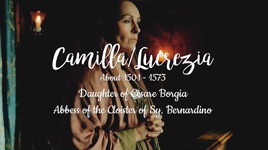





requested by anonymous
↳ the granddaughters of pope alexander iv
#weloveperioddrama#perioddramaedit#historyedit#history#lucrezia borgia#isabella d'este#elenora d'este#louise borgia#15th century#16th century#italian history#our edits#by julia
311 notes
·
View notes
Text
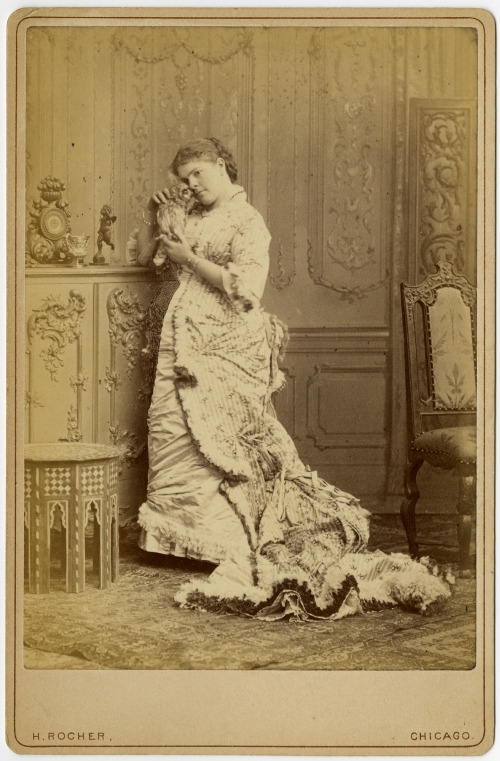
Annie Louise Cary (October 22, 1842 – April 3, 1921) was an American opera singer whose rich dramatic voice, three-octave range, and command of the grand style made her the foremost American contralto for a decade in the late 19th century. Studied in Milan with Giovanni Corsi until January 1868. That year, she made her debut in Italian opera as a profundo contralto in Copenhagen under the direction of Achille Lorini. The following summer was spent at Baden-Baden in study with Pauline Viardot, and in the autumn she began an engagement for Italian opera at Stockholm under the direction of Ferdinand Strakosch. After two months, she was engaged to sing at the Royal Swedish Opera, and sang her part in Italian to the Swedish of the other artists. The following summer she spent in Paris, studying with Giovanni Bottesini, a conductor and contra-bassist. In the autumn she went to Brussels to sing in Italian opera, and there made a contract with Messrs. Maurice and Max Strakosch for three years in the United States. In the winter of 1869/70 she studied in Paris, and during the spring in London with Henry C. Deacon, and sang at Drury Lane Theatre. She made her first New York appearance in September 1870 in concert at Steinway Hall with Nilsson, Vieuxtemps, and Brignoli. For twelve years from that time she was constantly engaged for opera or concerts, appearing with Carlotta Patti, Mario, Albani, and others in America, until the winter of 1875/76, when she visited Moscow and St. Petersburg, and repeated the tour in the following winter. Returning to America for the seasons of 1877-78 and 1878–79, she sang in opera with Clara Louise Kellogg and Marie Rose, under the management of director Strakosch. The three seasons following were given to opera with the Mapleson company, and to concerts and festivals in great variety. During the most active part of her professional career she sang at all the festivals given in New York, Boston, Cincinnati, Chicago, and Worcester. She also sang frequently in oratorio, and regularly participated in the concerts of the Brooklyn Philharmonic Society. she made her debut in January 1868 in Giuseppe Verdi’s Un ballo in maschera. In 1870 Cary made her London debut at Covent Garden in Gaetano Donizetti’s Lucrezia Borgiae. That year she was engaged by a company organized by the German-American impresarios Max and Maurice Strakosch and featuring Christine Nilsson. With that company Cary made a stunning New York City concert debut in 1870. She made her New York operatic debut in 1871. She was thereafter established as the preeminent contralto in both concert and opera on the American stage and perhaps in the world.In November 1873 Cary sang Amneris in the American premiere of Aïda, and in an 1874 New York production of Lohengrin she became the first American woman to sing a Wagnerian role in the United States. She took part in the American premieres of Verdi’s Requiem in 1874, Johann Sebastian Bach’s Magnificat in 1875 and Christmas Oratorio in 1877, and Arrigo Boito’s Mefistofele in 1880. Her final operatic performance was in Un ballo in maschera in Philadelphia in 1881.
#Annie Louise Cary#Giuseppe Verdi#Gaetano Donizetti#Covent Garden#Aida#Royal Opera House#Mefistofele#Arrigo Boito#Johann Sebastian Bach#Richard Wagner#Lucrezia Borgia#Requiem
2 notes
·
View notes